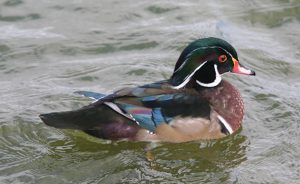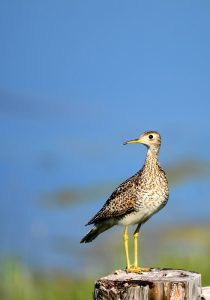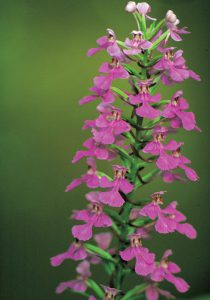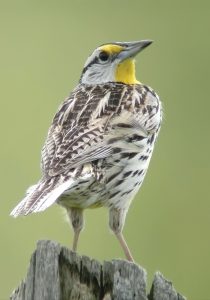A Global Biodiversity Crisis Hits Home in the Piedmont
By Joe Lowe

Wood Duck
When it comes to abundance, the stars we see at night (approximately 5,000) shine dimly compared to the number of plant and animal species in Virginia’s Piedmont, which may exceed 20,000, although the real number — if ever known — is almost certainly larger.
If that’s surprising, it’s because the “big” species we usually see, like oak trees and deer, take up a lot more space in our minds than they do on a species roster. In reality, “small” organisms — fungi and insects, among others — represent life’s greatest diversity, numerically dwarfing their larger counterparts.
These organisms, big and small, are never far. On a short walk, we might come across dozens or hundreds. Pill bugs, sumac bushes, and crows, for example, may not seem terribly interesting or consequential, but the Piedmont’s flora and fauna — known collectively as its biodiversity — are an absolute necessity for the area’s human residents.
Working together, plants and animals keep soils fertile, pollinate fruits and vegetables, produce fresh air, keep water clean, and help regulate climate. In short, they maintain a local life-support system without which the Piedmont would be a wasteland.

Upland Sandpiper
Although most of the region may look like a model of rural health, we know that its plants and animals are under intense pressure. How? Because species like the Rusty-patched Bumblebee and Purple Fringeless Orchid are telling us in the clearest way possible: by disappearing.
And they are not alone. Once common birds like the Common Nighthawk, Northern Bobwhite, and Eastern Whip-poor-will are now scarce in the region. Other species are gone. Since European colonization, Virginia has likely lost 72 species. In the Piedmont, another 59 are in serious decline — more than at any other time in modern history.
Some of these species range outside of the Piedmont and their downturns can’t be blamed entirely on local changes. Their dwindling numbers are symptomatic of a much larger problem.
Human alterations to the planet have forced extinction rates into overdrive, reaching levels not seen for the last 65 million years. And if trends continue, half the world’s total plant and animal species could be facing extinction by the end of the century. This wouldn’t be a loss just for wildlife enthusiasts, it would be a loss for everyone who depends on traditional economic and agricultural practices.
Like biodiversity itself, threats to flora and fauna vary by continent and region. In the Piedmont, there are many challenges, but experts agree that several rise above the others.
Habitat Loss, Fragmentation, and Degradation
During winter, local Wood Ducks spend months living in frigid water, impervious to conditions that would send us scrambling for shelter. Even so, we dismiss the feat with four words, “They’re used to it.” But what happens when “it” — the circumstances that animals and plants are accustomed to — change? Like us, their survival depends on a few basic requirements: food, water, shelter, and space. And when these conditions – known as habitat — deteriorate or disappear, they follow suit.

Purple Fringeless Orchid
In the Piedmont, this happens in several ways. The first, and most obvious, way is when habitat is destroyed for new construction.
While some counties do a better job of restricting urban expansion than others, this has not stopped forests and fields from being converted into roadside malls, roads, and residential areas.
New homes, of course, aren’t without greenspace; they have yards. But for wildlife, a well-manicured lawn, at best, offers little food, water, or shelter; at worst, it poses mortal risks when sprayed with pesticides, which kill pollinators like butterflies and bees.
Multiplied across the landscape, habitat loss has a fragmenting effect, breaking large forests and grasslands into a patchwork of small, distinct spaces. In the Piedmont, these usually take the form of isolated woodlots among surrounding farms. Although they may look fine, these forests lack the critical mass necessary to maintain long-term health. They’re susceptible to invasive species and other threats, and slowly break down as their natural communities deteriorate.
Habitat health isn’t just a forest issue. Given that farms cover much of the Piedmont, agricultural practices have a big impact on local biodiversity. Eastern Meadowlarks and many other grassland birds, for example, rely on local pasture for nesting sites. This can have deadly results, though, when fields are hayed before chicks fledge. Similarly, removing streamside forests and allowing cattle to graze and defecate in waterways is detrimental for aquatic species. The Dwarf wedgemussel, a freshwater mollusk, is already gone from Fauquier County, and eleven other mussel species are threatened in the region.
Invasive Species
If you think you know your neighbors well after a few years, imagine the relationships local plants and animals have after living together for millennia. These connections helped form a community that has flourished, in part, thanks to a natural system of checks and balances, maintaining native populations at sustainable levels.

Eastern Meadowlark
The Piedmont’s natural equilibrium, however, is in growing trouble thanks to the human-introduction of invasive species that don’t play by local rules. These species outcompete natives and multiply to nightmarish levels, upending the ecological fabric of our natural communities.
They come in many forms. A fungus from China, the Chestnut blight, decimated the Piedmont’s Chestnut trees in the first half of the twentieth century. More recently, insects like the Emerald Ash-borer and Wooly Adelgid have begun killing off our Ash and Eastern Hemlock trees.
Meanwhile, more than 80 species of invasive plants have besieged the Piedmont, sending destructive ripples throughout the food chain. For example, while caterpillars feast on native plants, they can starve on invasives. This means lower reproduction rates for Eastern Bluebirds and other songbirds that depend on caterpillars to feed their chicks in invasive-dominated areas.
Making things worse, invasive plants have found unlikely allies among our native White-tailed Deer. Thanks to human influence, deer populations have surged across the Piedmont in recent decades — and their impact has been dramatic. Not only do deer inadvertently spread the sticky seeds of some invasive plants, their voracious grazing threatens the health of native forests and plants.
Protecting the Piedmont’s Biodiversity
Despite the challenges, local citizens and organizations are actively working to protect the Piedmont’s biodiversity. Piedmont landowners have put nearly 500,000 acres under conservation easement, protecting it from development. But there is still more to do and plenty of ways to make an impact.
Create and Improve Habitat

Common Nighthawk
Most of the Piedmont is privately owned, which means that landowners have a large role to play in protecting biodiversity. Doing so is probably easier than you think. For starters, next time you feel compelled to tidy your lawn, relax. By leaving leaves, saving snags, and mowing a little less, you can improve habitat for local wildlife. If you want to do more, remove invasive species and plant natives. Remember, when it comes to protecting biodiversity, everything counts: a single oak tree can feed and provide shelter for hundreds of species.
If you’re interested in a conservation easement or would like to improve wildlife habitat on your property, the Piedmont Environmental Council can help. If you own a farm and would like to protect streams and improve livestock health, reach out to the local Natural Resources and Conservation Service or John Marshall Soil and Water Conservation District for support. The Virginia Department of Forestry can also provide stewardship recommendations to improve the health of your woodlot.
Learn More
Many organizations offer educational programs for children or adults. These include The Clifton Institute, Virginia Working Landscapes, Loudoun Wildlife Conservancy, Friends of the Rappahannock, and Bull Run Mountains Conservancy. For more intensive training, sign up for the Virginia Master Naturalist training program. The Virginia Native Plant Society provides excellent online resources and the Virginia Department of Forestry offers identification guides to local trees and shrubs.
Volunteer Locally
Volunteering to support land stewardship and citizen science efforts is a great way to get involved. Opportunities are available with The Clifton Institute, Virginia Working Landscapes, Friends of the Rappahannock, Loudoun Wildlife Conservancy, Blue Ridge Center for Environmental Leadership, and Bull Run Mountains Conservancy.
Leave a Reply